Giorgio Grani
Margin Optimal Classification Trees
Oct 19, 2022



Abstract:In recent years there has been growing attention to interpretable machine learning models which can give explanatory insights on their behavior. Thanks to their interpretability, decision trees have been intensively studied for classification tasks, and due to the remarkable advances in mixed-integer programming (MIP), various approaches have been proposed to formulate the problem of training an Optimal Classification Tree (OCT) as a MIP model. We present a novel mixed-integer quadratic formulation for the OCT problem, which exploits the generalization capabilities of Support Vector Machines for binary classification. Our model, denoted as Margin Optimal Classification Tree (MARGOT), encompasses the use of maximum margin multivariate hyperplanes nested in a binary tree structure. To enhance the interpretability of our approach, we analyse two alternative versions of MARGOT, which include feature selection constraints inducing local sparsity of the hyperplanes. First, MARGOT has been tested on non-linearly separable synthetic datasets in 2-dimensional feature space to provide a graphical representation of the maximum margin approach. Finally, the proposed models have been tested on benchmark datasets from the UCI repository. The MARGOT formulation turns out to be easier to solve than other OCT approaches, and the generated tree better generalizes on new observations. The two interpretable versions are effective in selecting the most relevant features and maintaining good prediction quality.
Solving the vehicle routing problem with deep reinforcement learning
Jul 30, 2022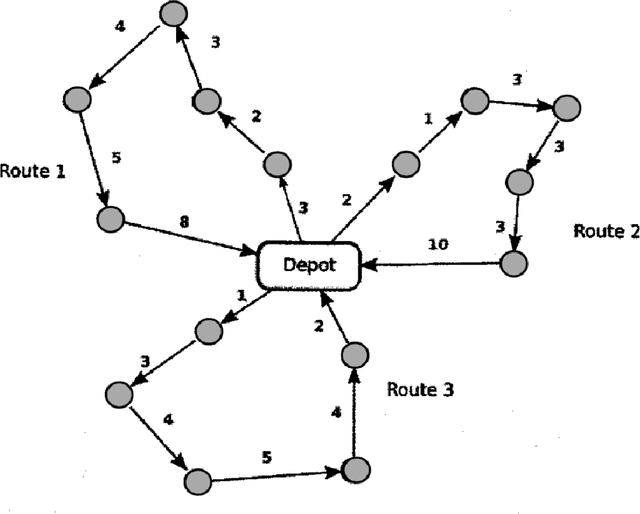
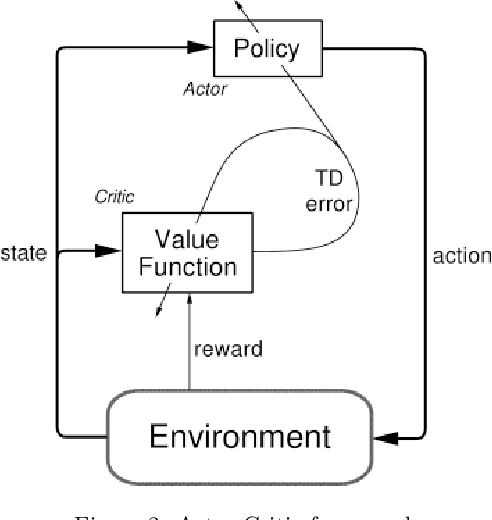
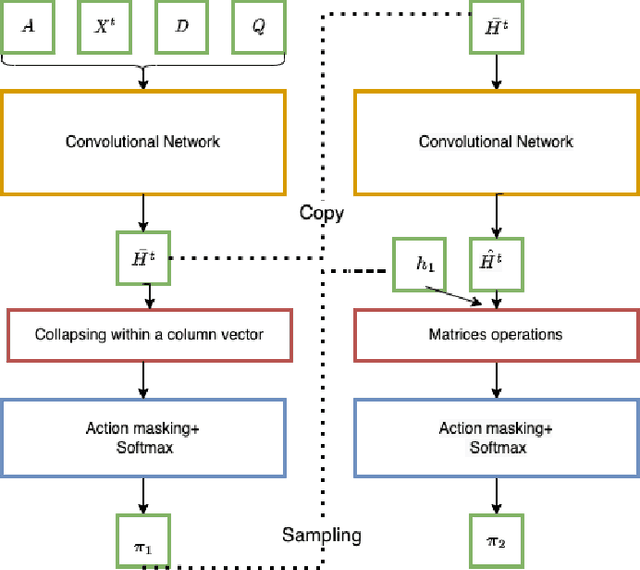
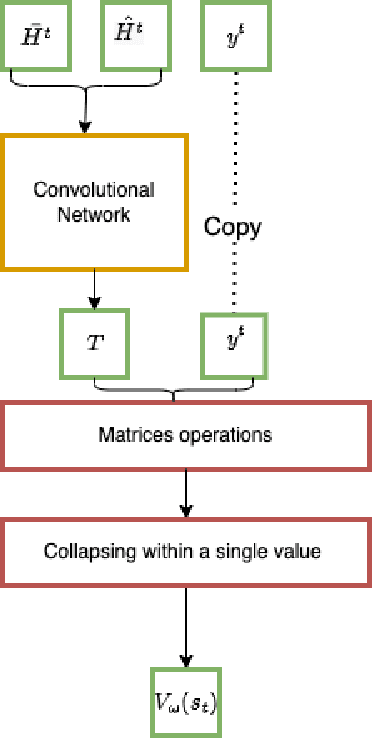
Abstract:Recently, the applications of the methodologies of Reinforcement Learning (RL) to NP-Hard Combinatorial optimization problems have become a popular topic. This is essentially due to the nature of the traditional combinatorial algorithms, often based on a trial-and-error process. RL aims at automating this process. At this regard, this paper focuses on the application of RL for the Vehicle Routing Problem (VRP), a famous combinatorial problem that belongs to the class of NP-Hard problems. In this work, first, the problem is modeled as a Markov Decision Process (MDP) and then the PPO method (which belongs to the Actor-Critic class of Reinforcement learning methods) is applied. In a second phase, the neural architecture behind the Actor and Critic has been established, choosing to adopt a neural architecture based on the Convolutional neural networks, both for the Actor and the Critic. This choice resulted in effectively addressing problems of different sizes. Experiments performed on a wide range of instances show that the algorithm has good generalization capabilities and can reach good solutions in a short time. Comparisons between the algorithm proposed and the state-of-the-art solver OR-TOOLS show that the latter still outperforms the Reinforcement learning algorithm. However, there are future research perspectives, that aim to upgrade the current performance of the algorithm proposed.
PUSH: a primal heuristic based on Feasibility PUmp and SHifting
Jul 30, 2022

Abstract:This work describes PUSH, a primal heuristic combining Feasibility Pump and Shifting. The main idea is to replace the rounding phase of the Feasibility Pump with a suitable adaptation of the Shifting and other rounding heuristics. The algorithm presents different strategies, depending on the nature of the partial rounding obtained. In particular, we distinguish when the partial solution is feasible, infeasible with potential candidates, and infeasible without candidates. We used a threshold to indicate the percentage of variables to round with our algorithm and which other to round to the nearest integer. Most importantly, our algorithm tackles directly equality constraints without duplicating rows. We select the parameters of our algorithm on the 19 instances provided for the Mip Competition 2022. Finally, we compared our approach to other start heuristics, like Simple Rounding, Rounding, Shifting, and Feasibility Pump on the first 800 MIPLIB2017 instances ordered by the number of non-zeros.
AI-based Data Preparation and Data Analytics in Healthcare: The Case of Diabetes
Jun 13, 2022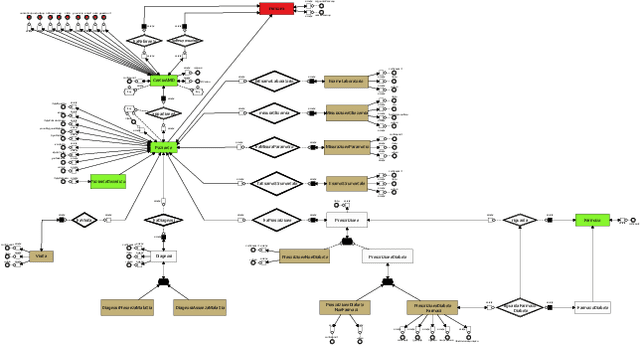
Abstract:The Associazione Medici Diabetologi (AMD) collects and manages one of the largest worldwide-available collections of diabetic patient records, also known as the AMD database. This paper presents the initial results of an ongoing project whose focus is the application of Artificial Intelligence and Machine Learning techniques for conceptualizing, cleaning, and analyzing such an important and valuable dataset, with the goal of providing predictive insights to better support diabetologists in their diagnostic and therapeutic choices.
An actor-critic algorithm with deep double recurrent agents to solve the job shop scheduling problem
Oct 18, 2021



Abstract:There is a growing interest in integrating machine learning techniques and optimization to solve challenging optimization problems. In this work, we propose a deep reinforcement learning methodology for the job shop scheduling problem (JSSP). The aim is to build up a greedy-like heuristic able to learn on some distribution of JSSP instances, different in the number of jobs and machines. The need for fast scheduling methods is well known, and it arises in many areas, from transportation to healthcare. We model the JSSP as a Markov Decision Process and then we exploit the efficacy of reinforcement learning to solve the problem. We adopt an actor-critic scheme, where the action taken by the agent is influenced by policy considerations on the state-value function. The procedures are adapted to take into account the challenging nature of JSSP, where the state and the action space change not only for every instance but also after each decision. To tackle the variability in the number of jobs and operations in the input, we modeled the agent using two incident LSTM models, a special type of deep neural network. Experiments show the algorithm reaches good solutions in a short time, proving that is possible to generate new greedy heuristics just from learning-based methodologies. Benchmarks have been generated in comparison with the commercial solver CPLEX. As expected, the model can generalize, to some extent, to larger problems or instances originated by a different distribution from the one used in training.
Solving the single-track train scheduling problem via Deep Reinforcement Learning
Sep 01, 2020



Abstract:Every day, railways experience small inconveniences, both on the network and the fleet side, affecting the stability of rail traffic. When a disruption occurs, delays propagate through the network, resulting in demand mismatching and, in the long run, demand loss. When a critical situation arises, human dispatchers distributed over the line have the duty to do their best to minimize the impact of the disruptions. Unfortunately, human operators have a limited depth of perception of how what happens in distant areas of the network may affect their control zone. In recent years, decision science has focused on developing methods to solve the problem automatically, to improve the capabilities of human operators. In this paper, machine learning-based methods are investigated when dealing with the train dispatching problem. In particular, two different Deep Q-Learning methods are proposed. Numerical results show the superiority of these techniques respect to the classical linear Q-Learning based on matrices.
Knowledge-Driven Learning via Experts Consult for Thyroid Nodule Classification
May 28, 2020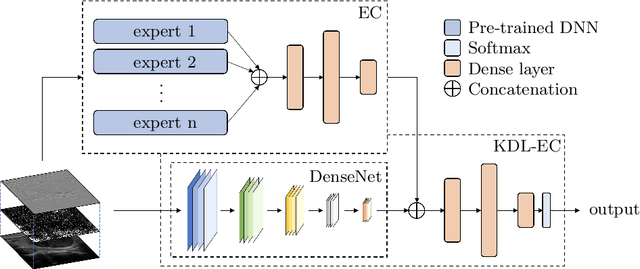

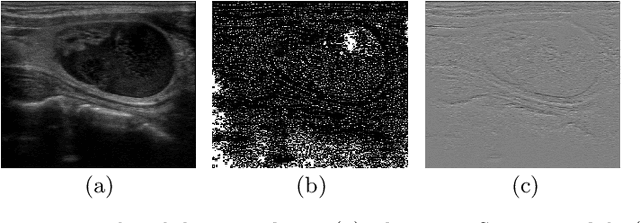

Abstract:Computer-aided diagnosis (CAD) is becoming a prominent approach to assist clinicians spanning across multiple fields. These automated systems take advantage of various computer vision (CV) procedures, as well as artificial intelligence (AI) techniques, so that a diagnosis of a given image (e.g., computed tomography and ultrasound) can be formulated. Advances in both areas (CV and AI) are enabling ever increasing performances of CAD systems, which can ultimately avoid performing invasive procedures such as fine-needle aspiration. In this study, we focus on thyroid ultrasonography to present a novel knowledge-driven classification framework. The proposed system leverages cues provided by an ensemble of experts, in order to guide the learning phase of a densely connected convolutional network (DenseNet). The ensemble is composed by various networks pretrained on ImageNet, including AlexNet, ResNet, VGG, and others, so that previously computed feature parameters could be used to create ultrasonography domain experts via transfer learning, decreasing, moreover, the number of samples required for training. To validate the proposed method, extensive experiments were performed, providing detailed performances for both the experts ensemble and the knowledge-driven DenseNet. The obtained results, show how the the proposed system can become a great asset when formulating a diagnosis, by leveraging previous knowledge derived from a consult.
 Add to Chrome
Add to Chrome Add to Firefox
Add to Firefox Add to Edge
Add to Edge